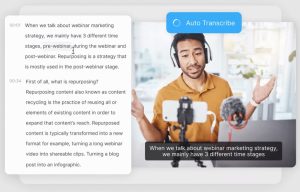Creating a website that is accessible to all users, including those with disabilities, is not only a matter of best practice but also a way to provide an inclusive user experience that benefits your business. An accessible website ensures that everyone can interact with your content, navigate your site, and engage with your business. In this post, we’ll explore what ADA compliance means, why website accessibility matters, and some of the best practices to help you design an inclusive website.
What is ADA Compliance?
The Americans with Disabilities Act (ADA) Standards for Accessible Design were established in September 2010 by the Department of Justice (DOJ) to ensure that electronic and information technology, such as websites, are accessible to individuals with disabilities. ADA compliance involves designing websites so that everyone, including users with blindness, low vision, hearing loss, and other disabilities, can navigate and engage with digital content effectively.
Why Website Accessibility Matters
An accessible website provides equal access to information and services for all users, similar to how a wheelchair ramp provides access to a physical store. Inaccessible web content can be a barrier that excludes people just as much as steps at a building entrance. For example, a person who is blind may use a screen reader that reads the text on the screen aloud, and someone with hearing loss may rely on captions for videos. Ensuring your website is designed to accommodate these needs is crucial to providing a positive and inclusive experience.
Here are some common accessibility barriers that can make your website difficult to use:
- Poor Color Contrast
Text that does not have enough contrast against the background can be unreadable for users with low vision or color blindness. - Use of Color Alone to Convey Information
People who are color-blind may not access information if it’s conveyed using only color cues. For example, using red text alone to indicate required fields on a form excludes users who cannot distinguish colors. - Lack of Text Alternatives for Images
Screen readers cannot interpret images without text alternatives (alt text). Providing descriptions for images allows users who are blind to understand the visual content. - No Captions on Videos
People with hearing disabilities rely on captions to understand video content. Without captions, the information in the video is inaccessible. - Inaccessible Forms
Forms without clear labels or error indicators can be challenging for screen reader users to complete. - Mouse-Only Navigation
People with physical disabilities who cannot use a mouse may need to navigate using a keyboard. Ensure your website can be fully navigated using a keyboard.
Legal Risks of Inaccessibility
If your website is not accessible, your business could be vulnerable to legal action. While there are currently no specific, enforceable regulations for website accessibility unless you operate a government website or public accommodation, businesses with a physical presence may have their websites considered as “gateways” to their locations, making them subject to ADA compliance standards.
The bottom line: building an accessible website isn’t just about compliance—it’s about ensuring a user-friendly experience for everyone.
 Best Practices for Website Accessibility
Best Practices for Website Accessibility
To create a fully accessible website, follow these four core principles:
- Perceivable
Visitors must be able to perceive the content on your site. This includes providing text alternatives for images, captions for videos, and using proper contrast ratios. - Operable
All features of your site should be navigable without a mouse, using keyboard commands alone. Consider conducting a “No Mouse Challenge” by navigating your site using only the Tab key. - Understandable
Content and interface should be easy to comprehend. Use simple language, clear instructions, and organized navigation to help users easily understand and interact with your site. - Robust
Your site should work well with current and future technologies, including screen readers and other assistive devices.
Implementing Website Accessibility
 Here are a few actionable tips to get started:
Here are a few actionable tips to get started:
- Use Alternative Text for Images (Alt Tags)
Describe the content and purpose of images. This helps screen reader users understand visual elements that may otherwise be lost. - Structure Your Content with Proper Headings
Use headings and subheadings to outline the structure of your page. This helps screen reader users navigate content and understand its hierarchy. - Create Captions and Transcripts for Videos
Most video services like YouTube offer transcription services. Adding captions makes your video content accessible to those with hearing impairments. - Ensure Navigation is Keyboard Accessible
Make sure all interactive elements can be accessed using a keyboard. Take the “No Mouse Challenge” to test your site’s operability without a mouse. - Use Accessibility Tools
Implement tools that allow users to adjust font sizes, change contrast settings, or underline all links. WordPress offers plugins like “One Click Accessibility” to help enable these features easily.
Testing Your Website for Compliance
Before launching or updating your website, it’s important to test its accessibility using available tools:
- No Mouse Challenge
Navigate your site using only the Tab key to ensure keyboard accessibility. - Compliance Checkers
Use tools like the WAVE Accessibility Evaluation Tool or Google’s Lighthouse to identify accessibility issues. - ADA.gov
Visit the ADA website for comprehensive guidelines and resources to help ensure compliance.
Need Help Building an Accessible Website?
Website accessibility may seem overwhelming, but taking small steps toward compliance can make a big difference in the user experience. If you’re not sure where to start or need assistance, reach out to a professional web development agency specializing in ADA compliance.
For more information, or to schedule a consultation, feel free to reach out at Optimize Worldwide.
By taking proactive measures, you can build a website that not only complies with legal standards but also provides an inclusive experience for all users.
 This blog post was based on a detailed presentation by Matt Morgan on Website Accessibility and ADA Compliance presented at the Greater Concord Chamber of Commerce. If you have any questions or need further assistance, feel free to contact Matt at matt@optimizeworldwide.com or call (925) 338-7368.
This blog post was based on a detailed presentation by Matt Morgan on Website Accessibility and ADA Compliance presented at the Greater Concord Chamber of Commerce. If you have any questions or need further assistance, feel free to contact Matt at matt@optimizeworldwide.com or call (925) 338-7368.
